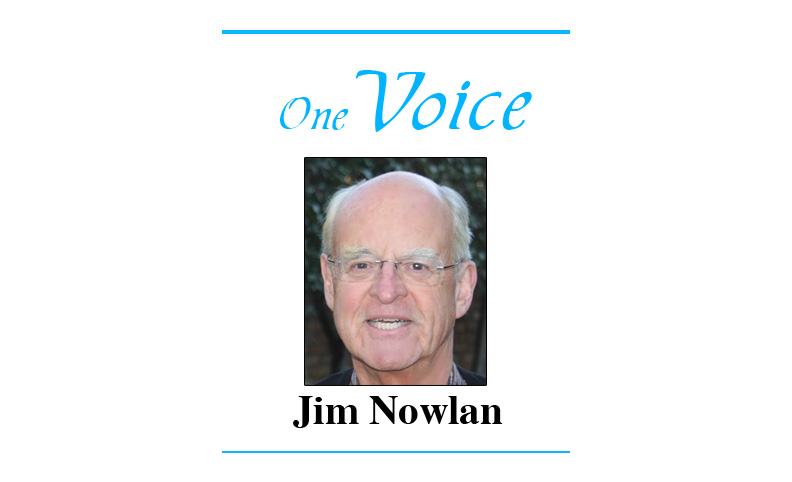
In a recent column, I averred that the George Floyd death and protests-in-reaction represented a classic case of the powerful “us versus them” syndrome that is baked into the human brain. Racism is a subset of this syndrome.
Floyd’s brother gave recent testimony to Congress that was in effect a cry for help for the Thems of our society. But what kind of help, and will it really help?
Try as we might, and must, racism is not going to be erased in short order, though I believe significant progress has been made since the 1960s: The percentage of blacks earning college degrees has quadrupled, and rigid housing segregation barriers largely have been torn down.
As a white country boy, I am obviously no expert on this topic, yet I am not clueless. As an aide to governor Jim Thompson in the 1980s, I was sent to impoverished, mostly African-American East St. Louis for three weeks, to investigate what level of vitality and capacity existed by which to jump-start a renewal. Not much, I found.
The poverty I saw in East St. Louis was not that of money, but a poverty of spirit, capacity, hope, and largely, not in all cases, dysfunctional families.
For generations now, neighborhoods without hope have been breeding grounds for gangs. The gangs serve social purposes not all that different in many ways from those of my college fraternity of yore. We all seek companionship, brotherhood, a sense of belonging, mutual support, social status, success.
Based on their difficult experiences with gangs in desperate neighborhoods, police, of whatever color, tend to develop, or so I think, us-versus-them attitudes toward gangs. The result is frustration, exasperation, anger toward the miscreants, and, as we have seen, brutality at times.
I returned last year to East St. Louis, to be on a panel to discuss urban-rural similarities. Since my time in the town in the early 1980s, the City has shrunk from 55,000 to 26,000, fewer than half as many residents. With big swaths of vacant land in the heart of town, it gave the impression of abandonment. Because housing segregation had diminished since I was last there, apparently those who could have, moved out, leaving the remainder with even less community leadership.
How to respond to the cries for help for desperate communities such as East St. Louis?
The Us-es, probably including you and me, are willing to spend some money on the Thems, out of our church upbringing to support the poor, especially if there is benefit for the Us-es. For example, increasing the educational achievement of the Thems will benefit the whole of our economy.
But money isn’t primarily the issue. The issue is dysfunctional subcultures. I define culture as distinct patterns of behavior.
The East St. Louis school district spent $16,000 per student in 2019. Just two percent(!) of high schoolers at East St. Louis were proficient in math in 2019; none exceeded proficiency. That means 98% of all students were basically failing math.
In contrast, near me, the mostly white/Asian-American Dunlap school district (suburban Peoria) spends $12,000 per pupil. Forty percent of Dunlap students were proficient in math; 20% exceeded proficiency, way, way above State averages.
So, how do we transform underperforming subcultures into achievers? Wealthy whites would spend big money if they believed transformation could happen.
Cultures can change. For example, teen births in the U.S. are down from 61.8 per 1,000 females ages 15-19 in 1990 to just 17.4 in 2018, the lowest ever recorded. Talk about an incredibly-positive change in behavior patterns! Key factors in the trend appear to be less sex, use of more effective contraception, and more information about pregnancy prevention.
Another tack would be to take youngsters out of toxic subcultures. I know a sharp, hard-working African-American mother who moved her four kids out of the wrong side of Peoria to a rural community, where they all seem to be thriving, and achieving.
I have another idea: The Oriental Academy of Child Development. As a condition of any welfare programs from which they benefit, parents would be required to attend classes taught by Korean and Chinese families on how to prepare your child for success.
Many African-American families understandably might be offended about learning of child development from whites. So, why not learn from other cultures of color, which are achieving even more than our dominant Caucasian culture? Indeed, white parents might benefit as well.
Cockamamie? Maybe. Why not try pilot projects to see?
We must think outside the box, or little, if anything will change. Oh, sure, we can throw more money at the problem; that’s easy, but it apparently wouldn’t solve anything.
For many years, Jim Nowlan was a senior fellow and political science professor at the University of Illinois in Urbana-Champaign. He has worked for three unindicted governors and published a weekly newspaper in central Illinois.

